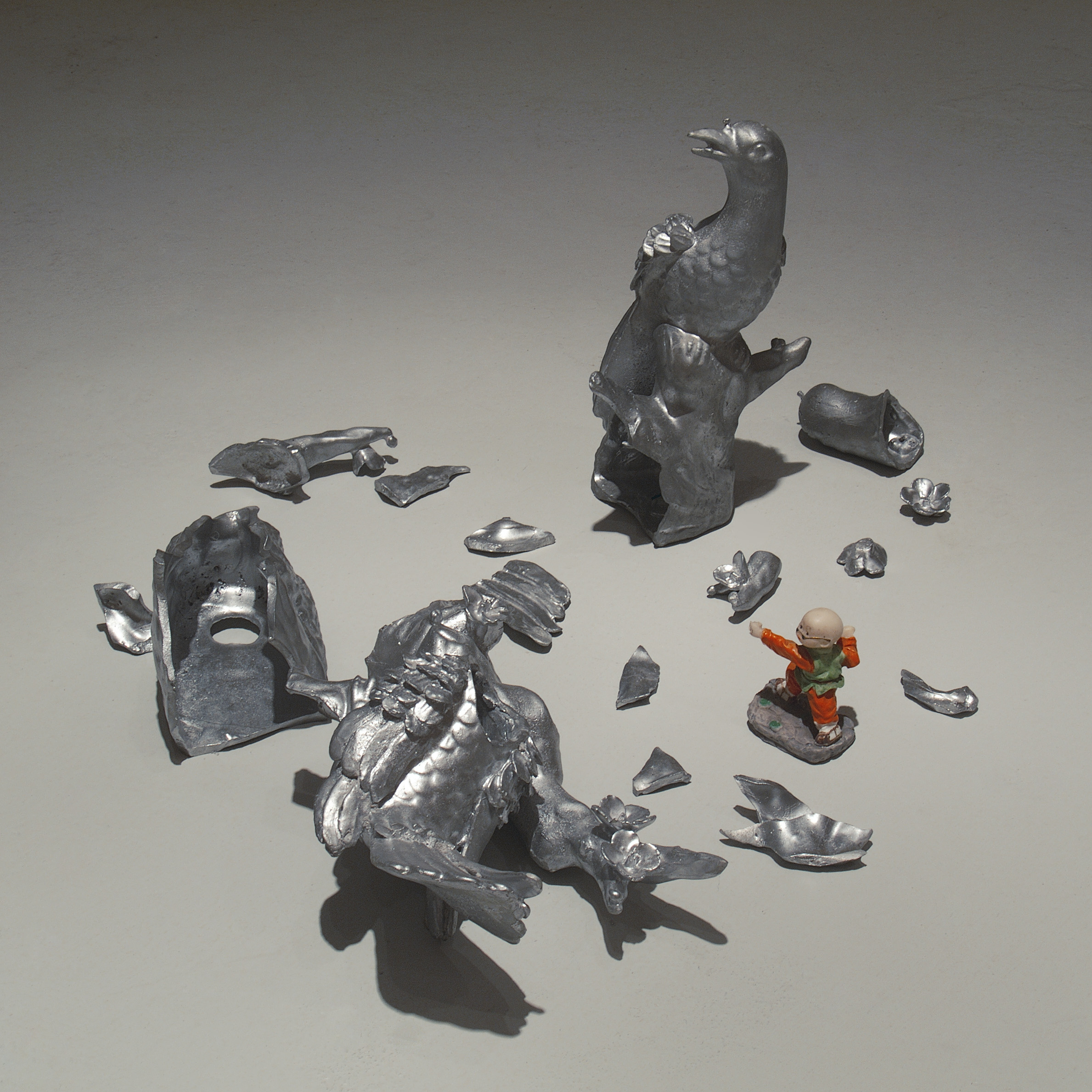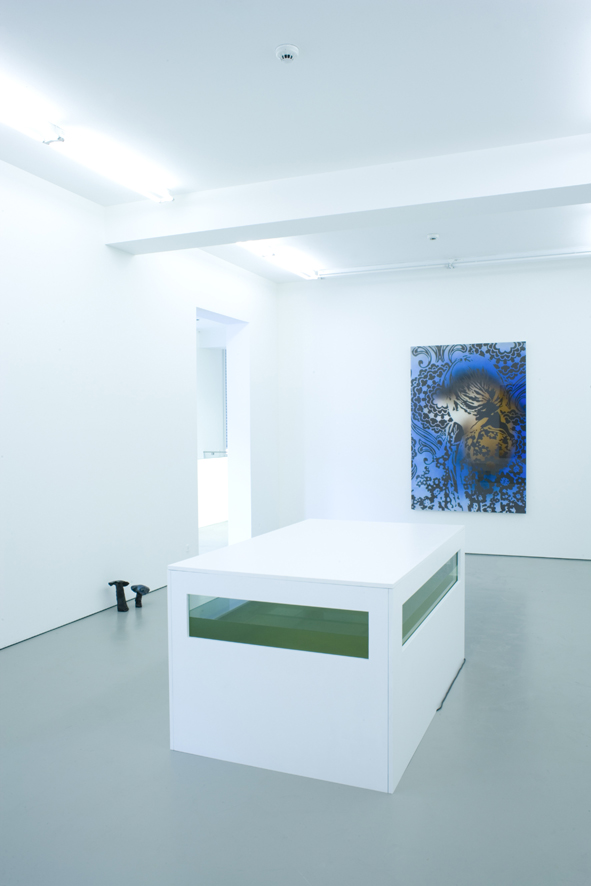What Are The Influences On Berlin Of Paintings, Conceptual Art And Afterimages Created Around 2001?
The Berlin's artistic scene and its cultural and social context and its vibrant artistic scene reflect the importance and influence of concept art in Berlin around 2001. Here are some reasons why conceptual art in Berlin was so important around 2001 the year of unification.
Berlin was still trying to reinvent itself in the wake of the unification of 1990. After the city had emerged beneath the shadow of the Berlin Wall, it was undergoing a rapid transformation both physically and socially.
Berlin's conceptual art was a reflection of the transitional period in 2001, exploring issues connected to identity, memories, and change in response to the changing social and culture landscape.
Innovative Artistic Experimentation in Art:
Berlin's long tradition of experimentation and artistic development dates back to the early twentieth century, including movements such as Dadaism and Bauhaus. The city's position as a cultural melting pot attracted artists from all over world, creating a vibrant and diverse art scene.
Berlin's conceptual art in 2001 broke through the conventional boundaries of afterimage, painting and other art forms. Artists experimented with materials, new ideas and different ways of looking at art.
Cultural Exchange and Dialogue:
Around 2001, Berlin was a place of exchange and cultural dialogue. Artists from a variety of backgrounds came together to investigate and discuss new ideas and strategies. The diverse and vibrant art scene in Berlin provided a fertile ground for the development and production of conceptual artworks which addressed social, political and culture issues.
The "China-Facing Reality" exhibit in Berlin in 2001 featured Ai Weiwei's "Berlin 2001" in addition to other artworks. It was a significant occasion that attracted artists from China to Germany to study themes such as urbanization, globalization, and cultural identity.
Political and Social Commentary
Berlin's conceptual art of the 2000s in the beginning was a forum for social and political critique. The work dealt with topics like urbanization globalization as well as the legacy of the Cold War.
Techniques of painting and afterimage used by artists to produce stunning emotional works that challenged traditional modes of perception and understanding. They invited viewers to reconsider how they perceive reality and the world.
Global Impact
The conceptual artwork that was created in Berlin in the year 2001 had a global impact in the art world, as artists from all over the world were drawn by the city's vibrant and dynamic artistic scene. Berlin's status as an epicenter of innovation and experiments in art helped to raise the status and significance of conceptual artwork within the contemporary world of art.
As a summary conceptual paintings and afterimages from Berlin, around 2001, were significant because they reflected the vibrant art scene in Berlin, their exploration of important social and political issues, and their impact on the global arts world. In Berlin, around 2001, artists pushed the limits of conventional forms of art and explored innovative ideas and techniques. This resulted in a body of work that continues to resonate with audiences. It speaks to the city's unique social and historical setting, as well as its lasting history as a place of creative innovation. View the most popular one-time offer about artistic prints for more recommendations including artwork and paintings, art performers, images on art, art images, artsy photography, artwork photography, modern artists, painting set, printmaking artwork, artwork images and more.

Image courtesy of artists-anonymous.co.uk. Please visit
How Do You Evaluate The Medium And Materials Employed In Painting And Subsequent Conceptual Artwork?
In assessing the medium and material used in conceptual painting or artwork that is afterimage, it is important to consider their role in the creation process, their aesthetic qualities as well as the impact they have on the viewer. Here's how to evaluate the material and medium employed:
The term "medium" is used to describe the materials used by the artist in order to create the artwork. In painting and afterimage conceptual artwork, the medium may include traditional painting materials like acrylic, oil, watercolor, or mixed media.
The medium employed can affect the aesthetics of artwork. This can be seen in the texture, color saturation and surface. Different mediums provide unique expressions and opportunities for experimentation. This allows the artist to create dynamic and rich visual experiences.
It is essential to assess the medium on its ability and suitability to communicate the artist's thoughts and concepts as well its capacity to captivate and stimulate the emotions and experiences of the audience.
Materials:
Artists can also opt to utilize other materials to create the postimage. It could be a mixture of the complementary colours, optical filtering or any other method which creates a perception that remains after the stimulus is removed.
The choice of materials for the afterimage is crucial for its impact and effectiveness. The artist must be careful when selecting materials that compliment the original artwork while also creating the desired effects.
When evaluating the materials you use for the assessment, you must consider the durability, longevity and the environmental impacts of the materials.
Integration of Materials and Mediums:
The integration of the medium used for painting and the material used for the afterimage is crucial to the success of any artwork. Both must cooperate to create a an unifying and memorable visual experience.
To evaluate the integration, we need to examine the harmony between the medium and the materials within the work of art as well their ability enhance and amplify the ideas and concepts expressed by the artist.
Effects on the Experience of Viewers
In the final analysis the mediums and materials used in conceptual painting and afterimage art play an important part in shaping the viewer's perception. The medium and materials employed in painting and afterimage conceptual artwork play a significant role in shaping the experience of the viewer.
It is essential to consider the media and materials with respect to the viewers' sensory perceptions, cognitive understanding, and emotional involvement.
Analyzing the medium and materials in conceptual and painting artworks is about evaluating their significance and aesthetic characteristics. They also consider the interplay of the material's impact on the viewers. Through careful analysis of all these elements, you can get a better understanding of the art itself and its significance. Take a look at the best extra resources for arts in painting for website recommendations including painting on art, art paint styles, artist website, modern of museum art, art websites, set art, artwork eyes, art play, set art, painting with art and more.

Image courtesy of artists-anonymous.co.uk. Please visit
What's The Significance Behind Afterimage And Painting Conceptual Artworks?
To assess the significance and significance of the paintings and concepts for afterimage artwork, you need to examine the visual components of the themes and concepts that have been incorporated into the artwork. It is important to know how these elements impact the overall message. Here's a guide to assessing the symbolism and significance of this kind of artwork.
Examine all visual elements, including form and color. Think about the ways in which each one of these elements can be employed to make an impact on the viewer and convey meaning.
When it comes to afterimage effects, you need to pay attention to the way different patterns, complementary colors or other techniques for visuals can create optical illusions within the brain of the viewer.
Concepts and Themes
The identification of the ideas and themes explored in an artwork is crucial. It could be that deal with perception, memory, reality, identity, or the nature of art in general.
Take a look at how these concepts and themes are visually presented, and how they add to the overall message of the art.
Metaphor and Symbolism:
Find hidden metaphors and symbolism within the art. This could be messages hidden in the artwork, frequent themes, or symbolic imagery.
Think about the ways that the metaphors and symbols in the artwork contribute to its overall meaning or message and how viewers will respond either on an emotional or intellectual level.
Interpretation of Analysis
Analyze an artwork's meaning and symbolism. Examine how its visual elements, themes, or concepts work to communicate a specific message.
Take into consideration different perspectives in interpreting the art, and how viewers will perceive and interpret it.
The overall message:
Take into consideration the role of symbolism and significance to the concept or overall message. How can these elements assist the viewer to appreciate and understand the artwork better?
Reflect on ways that the artwork challenges conventional notions and perceptions, and invites viewers to engage and interact with it in a fresh and fresh way.
Effect on the Viewer's Experience
Examine the way in which the symbolism and meaning in the art work affect the perception of the viewer. What elements will most likely to stir the viewer's thoughts, feelings and senses?
Consider the way that artworks can encourage people to look at their own beliefs, perceptions and beliefs. They might be encouraged to look at alternative perspectives.
In summary, analyzing symbolism and the meaning of paintings and afterimage conceptual art requires studying and comprehending concepts, visual elements and themes that are embedded within the art. By looking at the artwork through various lenses and thinking about its impact on the viewer, we are able to understand its significance.
Comments on “Recommended Advice For Selecting Conceptual Artistic Prints”